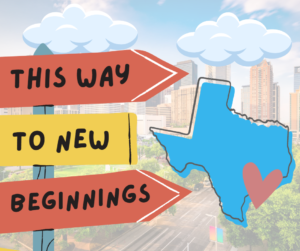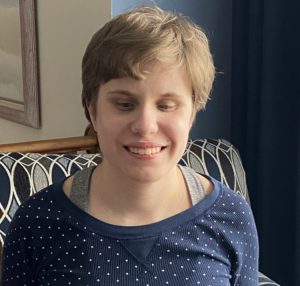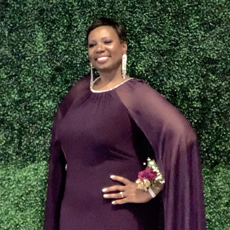New Beginnings for a Long-Distance Relationship
by Alicia Krage
 Welcome to a new year! I hope everyone is having a nice start to 2023. New Year’s Day is always my happiest day, because it feels like a clean slate and fills me with so much hope for the next 365 days.
Welcome to a new year! I hope everyone is having a nice start to 2023. New Year’s Day is always my happiest day, because it feels like a clean slate and fills me with so much hope for the next 365 days.
This year is no exception. 2023 appears to be a year of new beginnings: after almost 3 years of long-distance dating with my boyfriend Juan, this is the year I’m moving to live with him in Texas!
In the spirit of Valentine’s Day, I thought it would be a good time to reflect on the last 3 years and share what I’ve learned. After trying long-distance relationships with other partners (and subsequently failing at it), I finally got it right this time.
And I learned a lot along the way.
I’m guessing some of my readers may find themselves in this same position, so I thought I’d share some of the things I’ve learned these past three years — the highs, the lows, and everything in between:
-
- It is not all sunshine and rainbows. I say this because I feel like rom-coms tend to glorify long-distance relationships, only showing us the best parts (the romantic date nights and airport reunions). While I do love the adrenaline rush when reunion day is upon us, it does get lonely sometimes. And the sooner you realize this, the better chances you have of navigating it.
- Recognize different communication styles, and learn when to compromise. Find middle ground. I’m more of a texter, while Juan definitely prefers phone calls. It’s a lot easier to send quick updates when you text, and I’m the sort who appreciates a “How’s your day?” or some sort of other message to quickly check in with each other while we’re living our separate lives. He’s gotten much better at this over the past three years. At the same time, we’ve been dating long enough now and I’m secure enough now to not always need that. I can do my own thing while he does his, and we don’t text as frequently as we used to.
- Learn to adapt under these different circumstances. The first time Juan met my sisters was actually over a FaceTime Video call. It was early 2021, we’d been together for about eight months, and it was peak COVID times so we weren’t able to travel. What to do? Arrange a time for all of us to chat over FaceTime! When he did meet my sisters in person, it was a little less awkward than it might have been otherwise. After all, they had spoken with him before.
- Juan’s preference for phone calls helped me get much better at open, honest, and sometimes difficult conversations. All that practice has helped me improve in-person conversations, too. When all you have is your phone to keep you two connected, you get pretty used to talking. And not all those conversations will be super fun and easy. All those phone conversations made it much easier to discuss things later on when we were together in person, and especially when I had my extended visit with him in Houston last April.
- Make sure to still incorporate date nights into your lives! At the start of 2022, Juan and I had a conversation about how we could prioritize our relationship a little bit better, and we agreed to do date night once a month. We did movie nights over FaceTime, played games on the Amazon Alexa, and sometimes watched TV shows. Other times, we just talked over dinner. It didn’t really matter what the date was, as long as we had one. And we didn’t miss a single month!
- Keep an open mind. I remember telling Juan a long time ago that if anyone was going to relocate, it would be him. Why? Because at the time I couldn’t imagine ever leaving my hometown. I also remember his response: “Okay, but with all due respect, you haven’t really seen Houston yet.” He was right. And I did visit (several times) and I loved it. Now I’ve decided I was wrong to want to stay in my hometown. Living in the same place my whole life doesn’t appeal to me the way it used to. Bottom line: If you enter a long-distance relationship, as scary as it may be to realize this, the end goal is that someone needs to eventually relocate. And that might be you.
- This brings me to my last point: I decided to move because I want to move, not just because he lives there. It took me a long time to make the definitive decision to relocate., I wanted to make sure that I would actually like where I lived, and I wasn’t moving my entire life for one person. So, my one-week visits to Houston turned into two weeks, and then a month-long visit in April 2022, just to be sure. And Juan was very patient with me while I processed everything, because he knows it’s a big step.
It’s been quite the journey, but I’m so proud of what we’ve learned and will continue to learn as we embark on this next chapter.
Welcome to 2023: the year of new beginnings!















